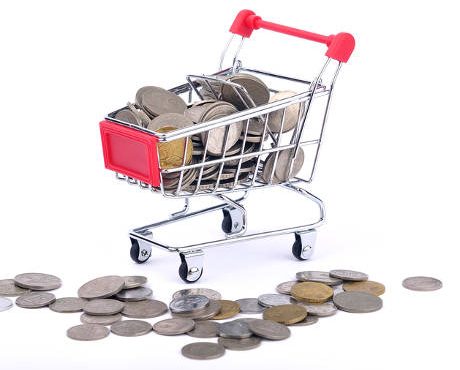Procter & Gamble Co. Stock: A Cash-Machine for Income Investors
Procter & Gamble Company (NYSE:PG) is one of the few solid dividend-paying stocks which you may want to hold forever and get a decent dividend check each quarter.
If you look at the performance of PG stock over the past year, it has massively outperformed both the Dow Jones Industrial Average and the S&P-500 by rising more than three times when compared to these benchmark indices.
Procter & Gamble stock is among those “dividend aristocrats” and consumer defensive players which successfully rose through the market volatility created by some massive sell-offs, including one we saw in June, when investors exited equity markets following Britain’s vote to exit from the European Union.
But companies producing your everyday consumables, such as toothpaste, shaving products, and detergent, aren’t the ones which get media attention. They don’t get financial press, especially when technology companies are making the big headlines and selling investors their next big ideas.
PG Stock: Long-Term Bet for Regular Income
If you’re a long-term, buy-and-hold-type investor, Procter & Gamble stock is a potential must-have in your portfolio. Here are a few compelling reasons to own PG stock.
For income investors, the biggest concern should be when making a long-term investment decision is the company’s ability to generate free cash flows and its dividend payment history.
Procter & Gamble’s products are sold in 180 counties with over $65.0 billion in annual sales. The company has been in the business for 178 years and rewards investors in Procter & Gamble stock with 60 consecutive increases in dividend. (Source: “The Procter & Gamble Company,” Procter & Gamble Company, June 30, 2016.)
When you look at the company’s free-cash-flow generation in the past few years, you’ll notice that Procter & Gamble has no issue on that front; since 2014, the company’s cash position has strengthened substantially.
Procter & Gamble Stock: Cost-Cutting Helping Profitability
During the 2016 financial year, Procter & Gamble produced over $12.0 billion in cash, about 20% higher than it produced three years ago. With a conservative dividend payout ratio of 70%, PG stock investors have benefited from a five percent annualized compound average increase in dividend payments. (Source: Ibid.)
Though Procter & Gamble stock’s rate of growth in its dividend payment has slowed in the past three years, it’s hard to question the company’s ability to continue paying dividends when it has a 126-year history of dividend payments backing that claim.
On the business front, Procter & Gamble is facing some headwinds from a strong U.S. dollar this year against world’s major currencies. A strong U.S. dollar eats into the company’s bottom line after Procter & Gamble converts overseas income into the local currency. As a result, it saw net sales falling eight percent for the fiscal year, which ended on June 30, when compared to the year prior.
But in order to counter this short-term challenge, Procter & Gamble has embarked on cost-cutting measures to preserve cash.
“Looking forward, we’re committed to continued productivity improvement and cost savings that provide the fuel for innovation and investments needed to accelerate and sustain faster top-line growth,” President and Chief Executive Officer David Taylor said in the earnings statement. (Source: “P&G Announces Fourth Quarter And Fiscal Year 2016 Results,” Procer & Gamble Company, August 2, 2016).
Bottom Line on PG Stock
For 2017, Procter & Gamble is expecting a flat growth in organic sales of about two percent as a stronger currency and some brand adjustments reduce its sales growth by about onepercent. As a result, Procter & Gamble estimates all-in sales growth of about one percent for fiscal 2017. (Source: Ibid.)
But for long-term investors in PG stock, this quarter-to-quarter performance may not matter much, especially when the company has a robust program of returning capital to shareholders through its dividend and share buyback plans. Procter & Gamble last year announced that it plans to return up to $70.0 billion to shareholders through dividend payments and share buybacks in the next four years. (Source: “P&G Faces Up to Mistakes in Beauty Business,” The Wall Street Journal, July 9, 2015.)
